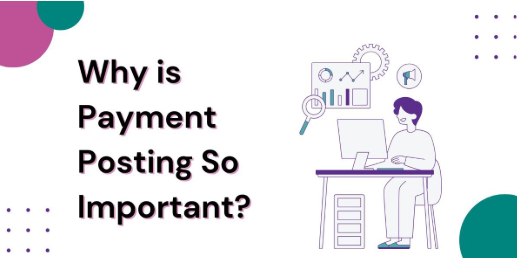Healthcare providers today face an increasingly complex landscape of medical billing, insurance credentialing, and revenue cycle management. With evolving regulations, new technology, and shifting payer requirements, many providers find themselves struggling with claim denials, delayed payments, and credentialing challenges.
At Malakos Healthcare Solutions, we’ve compiled the most frequently asked questions from healthcare providers in 2025. Whether you’re a solo practitioner, group practice, or healthcare facility, this comprehensive guide addresses your most pressing concerns about medical billing 2025 trends, credentialing services for doctors, and revenue optimization strategies.
1. Why is my insurance claim getting denied so often in 2025?
Claim denial rates have reached concerning levels in 2025, with many providers experiencing denial rates between 15-25% of submitted claims. Several factors contribute to this troubling trend:
Updated Prior Authorization Requirements: Insurance payers have significantly expanded their prior authorization requirements, particularly for behavioral health services, advanced imaging, and specialty medications. Many claims are denied because providers haven’t obtained proper pre-authorization or have submitted expired authorizations.
ICD-11 Implementation Challenges: The gradual transition to ICD-11 coding has created confusion, with some providers still using outdated ICD-10 codes or incorrectly mapping diagnoses to the new classification system.
AI-Driven Claim Reviews: Payers are increasingly using artificial intelligence to review claims, leading to more stringent scrutiny of documentation, medical necessity, and coding accuracy. These systems flag claims with even minor inconsistencies.
Telehealth Billing Complexities: Post-pandemic telehealth regulations continue evolving, with varying requirements across different states and payers. Many providers struggle with proper modifier usage and place-of-service codes for virtual visits.
Clean Claims vs Dirty Claims: The distinction between clean claims and dirty claims has become more critical than ever. Dirty claims—those containing errors, missing information, or coding inconsistencies—are rejected immediately, while clean claims process smoothly through payer systems.
To reduce denials, focus on submitting clean claims with accurate patient demographics, proper coding, complete documentation, and valid prior authorizations. Consider implementing real-time eligibility verification and investing in staff training on current billing requirements.
2. How long does credentialing really take, and can it be faster?
Provider credentialing in 2025 remains one of the most time-consuming aspects of starting a practice or joining new insurance networks. The reality is that credentialing timelines vary significantly:
Standard Credentialing Timeframes:
- Primary source verification: 60-90 days
- Insurance payer credentialing: 90-180 days
- Hospital credentialing: 120-210 days
- Medicare enrollment: 60-120 days
Factors Affecting Speed: The credentialing process can be expedited through several strategies. First, ensure all documentation is complete and accurate before submission—incomplete applications are the primary cause of delays. Second, work with credentialing services for doctors who have established relationships with payers and understand specific requirements.
Expedited Options Available: Many payers now offer expedited credentialing for providers in high-demand specialties or underserved areas. Some insurance companies provide 60-day fast-track options for qualified applicants.
Technology Solutions: Modern credentialing platforms use automated systems to track applications, send reminders for missing documents, and provide real-time status updates. These tools can reduce processing time by 30-40% compared to manual processes.
Pro Tip: Start the credentialing process 6 months before you plan to see patients. This buffer ensures you’re ready to accept insurance when you open your doors.
3. What’s the difference between in-house billing vs. outsourcing to experts?
This decision significantly impacts your practice’s financial health and operational efficiency. Here’s a comprehensive comparison:
In-House Medical Billing: Managing billing internally gives you complete control over the process and immediate access to your billing staff. However, it requires significant investment in training, software, and ongoing education to keep up with changing regulations.
Costs include salaries (billing specialists earn $35,000-$55,000 annually), benefits, software licenses ($200-$500 monthly), and ongoing training expenses. You’ll also need backup coverage for sick days and vacations.
The learning curve is steep—new billing staff typically need 6-12 months to become proficient, and coding errors during this period can be costly.
Outsourcing to Medical Billing Experts: Professional billing services bring specialized expertise, advanced technology, and dedicated resources to your revenue cycle management. They stay current with regulatory changes, payer requirements, and best practices.
Cost structures are typically percentage-based (4-8% of collections) or flat-rate monthly fees. This often costs less than maintaining an in-house team when you factor in all expenses.
Expert billing services offer faster claim processing, higher first-pass claim acceptance rates, and more aggressive denial management. They also provide detailed analytics and reporting to help you understand your practice’s financial performance.
Hybrid Approach: Some practices choose a hybrid model, maintaining basic billing functions in-house while outsourcing complex tasks like denial management, prior authorizations, or specialty billing requirements.
The right choice depends on your practice size, specialty, and comfort level with financial oversight. Practices with fewer than 5 providers often benefit most from outsourcing, while larger practices may justify in-house teams.
4. Which CPT codes are most commonly misbilled in behavioral health and physical therapy?
Accurate CPT coding is crucial for clean claim submission and proper reimbursement. Here are the most frequently misbilled codes in these specialties:
Behavioral Health Coding Errors:
Psychotherapy Services (90834, 90837, 90847): Providers often confuse time-based requirements. CPT 90834 requires 38-52 minutes of face-to-face time, while 90837 requires 53+ minutes. Billing the wrong code based on actual session time is a common error.
Psychiatric Diagnostic Evaluation (90791, 90792): Many providers incorrectly use 90792 (with medical services) when the patient encounter doesn’t include medical intervention or medication management.
Group Therapy (90853): This code requires specific group size parameters and can’t be billed for family therapy sessions, which should use 90847 instead.
Telehealth Modifiers: With continued telehealth expansion, improper use of modifier 95 or GT leads to claim rejections. Each payer has specific telehealth billing requirements.
Physical Therapy Coding Challenges:
Therapeutic Exercise (97110): Often confused with therapeutic activities (97530). The key distinction is that 97110 focuses on strength, endurance, and flexibility, while 97530 involves dynamic activities.
Manual Therapy (97140): Requires hands-on techniques and can’t be billed for mechanical modalities or simple stretching exercises.
Evaluation Codes (97161, 97162, 97163): The complexity levels (low, moderate, high) are frequently misassigned. Proper documentation must support the chosen complexity level.
Time-Based vs. Service-Based Billing: Many PT practices struggle with the 8-minute rule for time-based codes versus service-based billing for evaluations and re-evaluations.
Best Practices for Accurate Coding: Invest in regular coding education, use current CPT codebooks, implement coding software with built-in edit checks, and conduct regular internal audits to identify patterns of coding errors.
5. How much revenue do providers lose because of dirty claims?
The financial impact of dirty claims on healthcare practices is substantial and often underestimated. Industry data reveals alarming statistics about revenue loss due to poor claims quality:
Direct Financial Impact: Practices typically lose 3-5% of their potential revenue to dirty claims and subsequent denials. For a practice generating $1 million annually, this represents $30,000-$50,000 in lost revenue.
The average cost to rework a denied claim ranges from $25-$117, depending on the complexity and number of follow-up attempts required. When you consider that the average practice submits thousands of claims monthly, these costs accumulate quickly.
Hidden Costs of Dirty Claims: Beyond direct revenue loss, dirty claims create operational inefficiencies. Staff spend valuable time resubmitting claims, appealing denials, and tracking down missing information. This reduces productivity and increases administrative costs.
Patient satisfaction suffers when insurance issues delay care or create unexpected out-of-pocket expenses. Dissatisfied patients may seek care elsewhere, resulting in long-term revenue loss.
Common Causes of Dirty Claims:
- Incorrect patient demographic information (25% of dirty claims)
- Invalid insurance information or expired coverage (20%)
- Coding errors or missing diagnosis codes (18%)
- Missing or invalid prior authorization numbers (15%)
- Incorrect provider information or NPI numbers (12%)
- Documentation deficiencies (10%)
Clean Claims Success Metrics: High-performing practices achieve clean claim rates of 95% or higher on first submission. These practices experience faster payment cycles, reduced administrative burden, and improved cash flow.
Technology Solutions: Modern practice management systems include real-time eligibility verification, claim scrubbing software, and automated coding checks. These tools can reduce dirty claim rates by up to 75%.
6. Why are my insurance payments delayed by 30 days or more?
Payment delays have become increasingly common in 2025, frustrating providers and creating cash flow challenges. Understanding the causes helps practices address delays proactively:
Payer Processing Changes: Many insurance companies have extended their standard processing times from 14 days to 30+ days. Some payers cite increased claim volumes and enhanced fraud detection as reasons for longer processing times.
Prior Authorization Verification: Even after services are rendered, payers may delay payment while verifying that prior authorization requirements were properly met. This verification process can add 15-30 days to payment timelines.
Claims Review and Audits: Insurance companies increasingly audit claims before payment, particularly for high-dollar amounts or services they consider high-risk. These reviews can extend processing times significantly.
Electronic vs. Paper Processing: Electronic claims generally process faster than paper submissions, but many practices still submit paper claims for complex cases or appeals, leading to longer processing times.
Coordination of Benefits (COB): When patients have multiple insurance policies, coordination of benefits requirements can delay payments while payers determine primary and secondary responsibility.
Strategies to Accelerate Payments: Submit clean, complete claims with all required documentation. Implement electronic claim submission for all payers that accept it. Follow up on unpaid claims after 14-21 days rather than waiting for standard payment timeframes. Consider offering prompt payment discounts to encourage faster payment.
Payment Posting Efficiency: Efficient payment posting and denial management processes help identify and address payment delays quickly, improving overall cash flow.
7. What happens if I don’t credential properly with payers?
Improper credentialing has serious consequences that extend beyond simple payment delays. The ramifications can significantly impact your practice’s viability:
Immediate Financial Consequences: Without proper credentialing, you cannot bill insurance companies directly. All services must be billed as out-of-network or self-pay, dramatically reducing your reimbursement rates and limiting your patient base.
Out-of-network reimbursement rates are typically 30-60% lower than in-network rates. Many patients cannot afford the higher out-of-pocket costs associated with out-of-network providers.
Legal and Regulatory Issues: Practicing without proper credentialing may violate state licensing requirements and federal regulations. Some states require providers to be credentialed with certain payers before treating patients covered by those plans.
Medicare and Medicaid have strict credentialing requirements. Providing services without proper enrollment can result in denial of all claims and potential fraud investigations.
Patient Access and Trust: Patients increasingly verify provider insurance participation before scheduling appointments. Lack of credentialing limits your ability to attract new patients and may force existing patients to seek care elsewhere.
Long-term Practice Viability: Sustained periods without proper credentialing can create cash flow crises that threaten practice survival. The time and cost to correct credentialing issues while maintaining operations is substantial.
Retroactive Billing Limitations: Most payers limit retroactive billing to 30-90 days after credentialing is complete. Services provided during credentialing delays often cannot be billed to insurance, resulting in significant revenue loss.
Professional Reputation: Credentialing issues can damage your professional reputation within the healthcare community and affect referral relationships with other providers.
Prevention Strategies: Start credentialing processes early, maintain accurate provider information across all platforms, respond promptly to credentialing requests, and consider working with credentialing specialists who understand payer-specific requirements.
8. How can AI-powered billing tools help providers get paid faster?
Artificial intelligence in medical billing represents a significant advancement in revenue cycle management, offering solutions to many traditional billing challenges:
Automated Claim Scrubbing: AI systems analyze claims before submission, identifying potential errors, missing information, or coding inconsistencies. This technology can achieve 98%+ accuracy in detecting claim errors, dramatically reducing denial rates.
Advanced algorithms learn from historical claim data and payer feedback, continuously improving their ability to identify potential issues before claims are submitted.
Real-time Eligibility Verification: AI-powered systems automatically verify patient insurance eligibility and benefits information in real-time, ensuring accurate coverage information before services are rendered.
These systems can predict coverage limitations, prior authorization requirements, and patient financial responsibility, helping practices collect payments more efficiently.
Predictive Denial Management: Machine learning algorithms analyze historical denial patterns to predict which claims are likely to be denied. This allows practices to address potential issues proactively rather than reactively.
AI systems can prioritize which denied claims are most likely to be successfully appealed, helping practices focus their efforts on winnable cases.
Automated Prior Authorization: AI tools can automatically generate and submit prior authorization requests based on planned procedures and patient diagnosis codes. This reduces administrative burden and ensures authorizations are obtained before services are rendered.
Enhanced Documentation Support: Natural language processing helps ensure clinical documentation supports the codes being billed, reducing denials due to medical necessity issues.
Revenue Cycle Analytics: AI provides sophisticated analytics and reporting capabilities, helping practices identify trends, optimize workflows, and make data-driven decisions about their billing processes.
Implementation Considerations: While AI-powered billing tools offer significant benefits, successful implementation requires proper training, data integration, and ongoing monitoring to ensure optimal performance.
9. What’s the easiest way for a new provider to start accepting insurance in 2025?
Starting a new practice and navigating insurance acceptance can feel overwhelming, but a systematic approach simplifies the process:
Phase 1: Foundation Setup (Months 1-2) Obtain all required licenses and certifications for your state and specialty. Register for an NPI (National Provider Identifier) through the NPPES system—this typically takes 7-10 business days.
Establish your business structure (LLC, Corporation, etc.) and obtain an EIN (Employer Identification Number) from the IRS. Set up business banking accounts and consider business insurance policies.
Phase 2: Technology Infrastructure (Month 2) Select and implement practice management software and electronic health records (EHR) systems. Many modern solutions integrate billing, scheduling, and clinical documentation.
Ensure your systems are compliant with HIPAA requirements and can handle electronic claim submission to reduce processing times.
Phase 3: Credentialing Process (Months 3-8) Start credentialing applications 6 months before you plan to see patients. Begin with Medicare enrollment, as this often serves as primary source verification for other payers.
Prioritize credentialing with major commercial payers in your area based on patient population and market research. Consider which insurance plans your target patients are most likely to have.
Focus on payers that cover your specialty and have reasonable reimbursement rates. Research fee schedules and contract terms before committing to credentialing efforts.
Phase 4: Billing Setup (Months 6-8) Decide whether to handle billing in-house or outsource to medical billing experts. Consider your practice size, complexity, and available resources.
If billing in-house, hire and train qualified billing staff, implement claim scrubbing software, and establish denial management workflows.
If outsourcing, research billing companies that specialize in your practice area and have demonstrated success with similar providers.
Phase 5: Launch and Optimization (Month 9+) Begin seeing patients and submitting claims. Monitor key performance indicators including clean claim rates, days in accounts receivable, and denial rates.
Implement regular financial reporting to track practice performance and identify areas for improvement.
Quick Start Tips:
- Work with an experienced healthcare attorney to review contracts and agreements
- Consider starting with a limited number of insurance plans and expanding gradually
- Implement patient payment policies for deductibles and copayments from day one
- Establish relationships with other providers for referrals and support
Common Pitfalls to Avoid: Don’t underestimate credentialing timelines—delays are common and can significantly impact your practice launch. Avoid accepting insurance plans with poor reimbursement rates just to increase patient volume. Don’t neglect compliance requirements, as violations can be costly and time-consuming to resolve.
Transform Your Revenue Cycle Management with Malakos Healthcare Solutions
Navigating the complex world of medical billing, credentialing, and revenue cycle management doesn’t have to be overwhelming. The challenges outlined in this guide—from increasing denial rates to credentialing delays—are common across the healthcare industry, but they’re not insurmountable.
At Malakos Healthcare Solutions, we understand the unique pressures facing healthcare providers in 2025. Our comprehensive approach to medical billing and practice management combines cutting-edge technology with deep industry expertise to help providers maximize their revenue while minimizing administrative burden.
Why Choose Malakos Healthcare Solutions?
Our team of certified billing professionals and credentialing specialists has helped hundreds of providers optimize their revenue cycles. We offer:
- Comprehensive Billing Services: From claim submission to denial management and appeals
- Expert Credentialing Support: Fast-track your insurance enrollment with our proven processes
- AI-Enhanced Technology: Leverage the latest in billing automation and analytics
- Specialized Expertise: Deep knowledge in behavioral health, physical therapy, and other specialties
- Transparent Reporting: Real-time access to your practice’s financial performance
Ready to Optimize Your Practice’s Revenue?
Don’t let billing challenges and credentialing delays hold your practice back. Our comprehensive billing audit reveals exactly where your practice is losing money and provides a clear roadmap for improvement.
Schedule Your Free Billing Audit Today
Contact Malakos Healthcare Solutions at [phone number] or visit [website] to schedule your complimentary billing analysis. During this comprehensive review, our experts will:
- Analyze your current claim denial patterns and identify root causes
- Review your credentialing status and identify opportunities for network expansion
- Evaluate your billing processes and recommend optimization strategies
- Provide a customized action plan to increase your collections and reduce administrative costs
Take the first step toward optimizing your practice’s financial performance. Your free billing audit could be the key to unlocking thousands of dollars in lost revenue and streamlining your administrative processes.
Contact Malakos Healthcare Solutions today—because your time should be spent caring for patients, not chasing payments.









